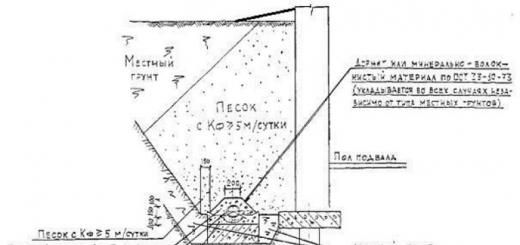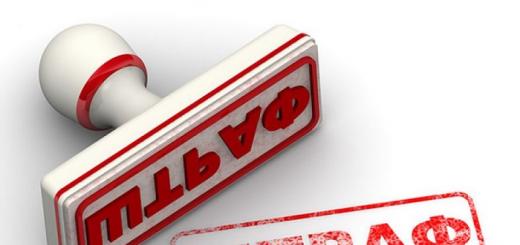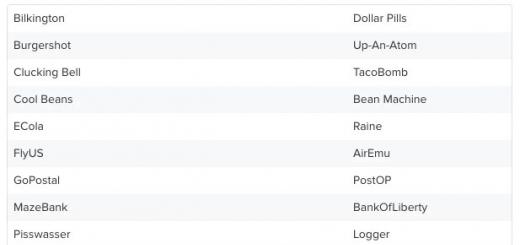The Central Bank lowers the key rate, and following this, banks begin to reduce deposit rates. How is it connected at all? My deposit term in Tinkoff Bank has expired, I was going to roll it over, but the rate has already been reduced.
I was warned, but that doesn't make it any easier. Once the rate was even 8%, but now it is 5 or 6%. Is this reduction legal at all and why is it happening?
What should I do the next time the Central Bank lowers the rate? You won't earn much on the interest on the deposit.
Hope, as a contributor, I understand you. I also opened a deposit with a reduced interest, but I don’t blame the bank for this. As an economist, I understand why he does this. In fact, this is a sign of reliability. If the bank had not lowered the rate, I would have hesitated and would not have trusted him with my money.
Ekaterina Miroshkina
economist
Where does the interest on the deposit and account balance come from?
A bank is a commercial organization. It must be profitable, like a store, for example. The store buys products cheaper, sells more expensive, the difference is its profit. It is the same with a bank: it takes money at a low interest rate, and issues it as loans at a higher one.
The bank will take your money, give it to borrowers as loans and make money on it. He will give you part of the profit as interest on deposits. And the other part will be spent on its own expenses, for example, it will pay for the work of the call center, install more ATMs, develop a convenient application, and insure risks.
Savings accounts and debit card balances are also a source of money for the bank. And he also makes money on them and sets such tariffs there so that working with these funds is profitable and not risky for everyone.
When a bank attracts money as deposits or balances on savings accounts and cards, they cost it something. If you deposited 100 thousand at 6%, then this money cost the bank a conditional 6 thousand a year. He must pay you this amount as interest when the time comes. Or the bank promised you to charge interest on the balance on debit card- he needs to get this money from somewhere, that is, to earn it.
And the bank must also form reserves and insure your money - this is a mandatory requirement by law. To make sure you get your money back, the bank pays fees. And the money for them also needs to be taken from somewhere. The bank knows how to earn this money using depositors' funds. He earns them and shares part of the profit with you - this is the interest on deposits, accounts and cards.
Why the deposit interest depends on the key rate
Your deposits and account balances are not the only source of working capital for earning. The bank can borrow money from the Central Bank at an interest rate approximately equal to the key rate. In the summer of 2018, the key rate of the Central Bank is 7.25% per annum. That is, if the Central Bank gives the bank 100 thousand, this money will cost about 7 thousand a year. In fact, the calculation is more complicated, but it is enough for understanding.
Suppose a bank needs a billion rubles to issue loans and earn interest.
Here's where he can get them:
- Ask the Central Bank at 7.25% per annum. Large and reliable banks will easily receive this amount for their purposes, earn on it, and then return it.
- Use your deposit or card balance at your own rates. This money needs to be insured at a deposit insurance agency, service their acceptance, and pay commissions.
In order for the bank to profitably use your money and pay you interest for it, deposits and card balances must cost him less than funds from the Central Bank. Then both you and the bank will earn. Therefore, most commercial banks offer deposits at a rate below the key rate.
Everything that is more expensive is unprofitable for the bank. This means that you will not have the opportunity to earn on your contribution. Let this earnings and not very big, but with a guarantee.
But it's not just about the benefit to the bank. There are banks that offer rates higher than what could be taken from the Central Bank. It seems as if they are just giving investors the opportunity to earn more. In fact, a high rate on deposits and savings accounts is not always a good sign for a depositor.

What is the danger of high interest rates on deposits
There are banks that find it difficult to take money from the Central Bank. And then they offer high rates on deposits. For example, now 8% is a very high rate. It is worth thinking carefully before opening a deposit with such conditions.
It happens that banks collect money at a high interest rate, knowing in advance that they will not return it. They open offices, “vacuum” money from the population, promise fabulous income, and then withdraw money from their accounts and disappear. What difference does it make, at what percentage to promise deposits if you are not going to return them?
Sometimes it's even worse: banks attract customers high stake, in fact they accept money, but according to the documents they do not. Then the bank's license is revoked, and the depositors get nothing, because they were not in the database, and their deposits were not insured.
How to understand that the deposit rate is too high
The Central Bank calculates the basic return on deposits every month. This is the average maximum rate of the largest banks. Bank payments to the DIA depend on it. Look what basic return for August 2018. If a bank offers a rate higher than the base rate, there may be something wrong with it. At a minimum, he will have to pay more contributions to the DIA, and the Central Bank has a reason to take a closer look at his work.
The bank can lower the deposit rate only upon prolongation of the agreement or for new depositors. In fact, this is just a change in the bank's tariffs. He has every right to do so by law. For the bank, as well as for you, there is freedom of contract.
I carefully read the conditions of Tinkoff Bank regarding the rate. In paragraph 3.2 it is written that for already open deposits the rate is not reduced until the end of the term, and a change in the rate on savings accounts is warned three days in advance. This is in accordance with the law.
The fact is that a savings account is not a deposit. It does not have a period during which interest is charged. Therefore, such accounts will not be subject to the norm of the Civil Code on deposit interest, which the bank cannot reduce before the end of the contract.
If the bank has warned you about the rate cut before the renewal of the contract or you are entering into a new contract, there is no violation in lowering the rate. You can refuse to prolong, take your money, take it to another bank or invest somewhere.
The continued growth of the rate on ruble deposits in the ten largest banks will not increase the real return on deposits for the population. Interest on deposits is growing too slowly, and inflation is accelerating. In addition, banks have so much free money.
The maximum rate on ruble deposits in the top 10 banks has been growing since mid-summer. By mid-September, it reached a six-month high - 6.652%, according to the materials of the Central Bank. The increase in profitability is caused by two reasons, the expert of the group explains bank ratings Analytical Credit Rating Agency (ACRA) Mikhail Doronkin. First, many banks followed the example of Sberbank, which was the first to raise rates at the end of August. This happened on the 24th, when the credit institution raised rates by an average of 0.1-0.4 percentage points (depending on the term and amount).
You don't need much
Secondly, now the cost of new borrowings in the debt markets has increased markedly against the backdrop of capital outflow, continues Doronkin. Many banks again began to attract funds from the population. However, there is still a liquidity surplus in the banking sector, so credit institutions do not need to actively attract deposits from individuals, which is reflected in a very restrained growth in rates.
“It is rather important for banks not to provoke an outflow of ruble deposits in favor of buying cash currency against the backdrop of a noticeably cheaper ruble” , - ACRA expert concludes.
The weak ruble in August-September pushed inflation to growth, because of this, the rate of price growth turned out to be higher than expected by the Central Bank. By mid-September, inflation accelerated to 3.1% in annual terms. According to the forecast of the mega-regulator, inflation will continue to rise and by mid-2019 it will rise to 5-5.5%.
Jaap Arriens/ZUMAPRESS.com/Global Look Press
Maximum deposit rate the top 10 banks were growing even before the September decision of the Central Bank to raise the key rate precisely because of the expectations of accelerating inflation next year, emphasizes Forex Club analyst Ivan Marchena.
Another reason for the growth of interest rates on deposits in the "big ten" is the need to replace the money of companies with the savings of the population, adds Alexander Shustov, CEO of the financial company Money Fanny. Due to the abolition of the requirement for repatriation foreign exchange earnings for exporters subject to US sanctions, banks are interested in new cash replenishment, as companies can seriously reduce the cash flow that supported the stocks of funds in credit institutions.
Scattered Win
An increase in the rate is unlikely to mean an increase in the real return on deposits, Shustov argues. The winners will be those citizens who brought large sums to banks and for a long time.
“Those who choose to take advantage of short-term offers have little to gain” , says the financier.
Moreover, next year, due to the further acceleration of inflation and slowdown in economic growth, the entire “gain” of depositors from the deposit will be “dispelled” by the inevitable increase in spending on daily needs.
Rates on ruble deposits are unlikely to cross the threshold of 7%, except for banks far from the top hundred, Alexander Shustov concludes. Mikhail Doronkin from ACRA shares a similar opinion: in the next month or two, the dynamics of deposit rates will remain in the slightly positive zone. Then we need to wait for November, when a new package of US sanctions can be adopted. The “behavior” of the key rate and, as a result, the further movement of the return on deposits will largely depend on the degree of their rigidity of restrictions.
January 2019
Since the beginning of 2018, there has been a rather impressive decrease in interest on deposits for all credit organizations operating on the territory of the Russian Federation. What are they made of and why are deposit rates increasing or decreasing - the answers to these questions are in today's publication.
How is the interest rate determined on a deposit?
The interest rate on deposits depends on a number of factors that determine what its current value will be. Interest on deposits fall or rise, formed under the influence of:
- the general economic situation in the state - inflationary processes, the state of the country's international debts are taken into account;
- stability and financial well-being of a particular bank where the deposit is located - the more reliable the company, the sooner the percentage offered to investors will increase;
- deposit options - the basic terms of the contract initially form this indicator;
- currencies - if the deposit is in rubles, the amount of dividends will be an order of magnitude larger than on capital invested in a bank in foreign currency.
And, finally, the main argument that forms the value considered in the article is the Central Bank's rate on deposits. It is determined by the main financial institution RF, and any changes in this indicator will inevitably affect a specific bank rate.
Why are deposit rates going down?

Bank deposit rates have fallen - why is this happening? First, it is important to understand that such a process is an economic norm. In 2020, there is a general and dynamic change in rates for a fall, and, according to experts' forecasts, this trend will continue further. The domestic market is gradually coming back to normal. Accruals on long-term contracts become higher than on short-term ones. Companies no longer need short-term liquidity. Working on the decline, they automatically reduce the pace of investment, regulating financial flows and stimulating Russians to invest for longer periods of time.
The main reason for lowering the rate is a sufficient amount of cash against the background of a decrease in demand for consumer lending to the population. The popularity of obtaining multiple loans by one client is sharply declining. Thus, there is nowhere to allocate finances, and it is objectively not profitable to charge an increased interest on capital that, in fact, does not work. At the same time, short-term investments are practically not justified, and only 5-6% of potential bank depositors are able to give money for a long time.
The second circumstance that provokes a decrease in the indicator is the general fall in the base rate of Sberbank in all directions at once. So did the rest of the big ones. financial institutions. And the last reason that provided in the current period low rates on deposits. This is a slight reduction in the Central Bank rate, which, according to analysts, will be reduced even more by 2020.
When will interest rates increase?
How realistic and predictable is the increase interest rates by deposits? This question is of interest to all citizens who invest their savings in domestic banks. What to expect in the near future? And if growth is still possible, how and under the influence of what factors will this happen?
Analysts do not make optimistic forecasts on this account - no growth is expected in the next 12-15 months. The situation will begin to change if there is a shortage of cash capital in the Central Bank, and assets will fall. There will be a sense in additional incentives for investment, and the main lever for activating these processes is increased interest on deposits. Moreover, small non-state commercial companies will react most quickly, offering their customers not only more loyal conditions for investing a deposit, but also promising them an attractive reward for the opportunity to use money.
The only thing that those who trust large banks and expect their profits to grow can count on is to track Special offers. As a rule, they are launched by festive events and dates - then an increase in interest on deposits is most likely.
What to do as an investor - step by step instructions
Because change the situation to economic market countries, customers of banks are unable to, the correct solution in the event of an unforeseen reduction in rates is to return the deposit. This is done as follows:
- contact the bank personally;
- we submit a written application addressed to the head of the organization with the requirement to return the body of capital and the additional amount already accrued to it within the framework of the deposit agreement;
- we are waiting for five days - this is the time established by law for consideration of the petition;
- after the specified period, we again contact the bank - if the desired result is not followed, we require a written reason for the refusal;
- we go to the consumer protection department or law enforcement authorities (the inspection will check and, if the rights of the depositor have been violated, financial company will be required to return the money).

Whether the rates on deposits will grow, does not depend on the depositor. However, it is quite possible to increase your financial profit even against the background of their decline, if you do not ignore the following advice from experts in the field of economics and banking and take into account the following points:
- When choosing the type of deposit, we give preference to such programs where there is the possibility of replenishing capital at any stage of the contract, because the profit is calculated on the amount of funds invested in the company.
- We try to capitalize the invested funds as often as possible. It increases the body of the initial amount, respectively, even with a reduced rate, the final earnings will be greater. It is good if this procedure is carried out monthly.
- Terms of validity of the contract - an agreement concluded for more than one year (provided that it is not terminated at the request of the client ahead of schedule) will always give more benefits than short-term investments.
- When choosing an investment currency, we give preference to the Russian ruble - the amount of basic charges for it will always be more than for the euro or the dollar.
Best Free Maps 2020
The outgoing year did not particularly please investors. A year ago, in some banks from the top 50, it was possible to place rubles at 9.5-10% per annum, dollars - at 2-2.5%, euros - at 1-1.5%.
At the same time, the most successful bank investment of the outgoing year, despite minimum rates, turned out to be deposits in euros. In ruble terms, they brought income up to 10.8%, bypassing deposits in rubles. But those who made a bet on dollar deposits were not lucky: the best of them turned into a loss of 1.7–2.2% of their investments. The fluctuation of the exchange rate played a cruel joke on dollar depositors: the dollar fell against the ruble over the year (from December 22, 2016 to December 21, 2017) by 4.2%, and the euro rose by 9.3%.
Over the past 12 months, the rates of ruble deposits, depending on the bank, have decreased by an average of 0.5-2% per annum.
According to the Central Bank, the average maximum rate in 10 banks that collected the most funds from the population in ruble deposits fell by 1.02 percentage points (pp) to 7.38% per annum (by the second decade of December 2017); at the end of September, the indicator updated its historical low, amounting to 7.237%.
In 2017, the average cost of attracting funds from individuals in rubles by banks for up to a year was 6.02%, and for longer periods - 7.08% per annum, follows from a review by the Analytical Credit Rating Agency.
The key rate - a benchmark for the value of money in the economy - was reduced twice as fast by the Central Bank: by 2.25 percentage points per year to 7.75% (since December 18).
Rates currency deposits did not change much during the year. Banks changed the profitability of dollar deposits in different ways: for some, it increased by 0.1–0.3 percentage points, while for others, on the contrary, it decreased by the same amount.
The euro deposit rates decreased by 0.1–0.3 percentage points. True, half of the banks have actually zeroed them. BUT Sberbank , Rosselkhozbank(RSHB), Citibank and a number of other banks have temporarily abandoned deposits in euros, retaining only current accounts and, in some cases, deposits for VIP clients.
The maximum that depositors with rubles can expect today when placing state-insured amounts (1.4 million rubles) in banks from the top 50 is 8–8.55% per annum. The best offers for currency depositors are at the level of 2-2.5% in dollars and 0.9-1.2% in euros.
Banks will drop interest
Despite the decrease in the key rate last Friday from 8.25% to 7.75% per annum, before the New Year, banks keep ruble deposits with rates above 8% per annum. But this phenomenon is temporary, the profitability of ruble deposits in 2018 will continue to decline, bankers and experts are sure. Indeed, in January, many banks will complete the acceptance of seasonal deposits with higher rates.
The reasons for the decline are standard: a record reduction in inflation and the key rate, says Yury Gribanov, CEO of Frank Research Group.
After the December drop in the key rate in January-February, we can expect a reduction in ruble deposit rates for up to a year by the same 0.5 percentage points, says Natalya Vashchelyuk, chief analyst at Binbank. Sberbank does not rule out a reduction in its rates on deposits in the near future, its president German Gref said yesterday, the bank always changes rates after the key one.
The Deputy Head of the Retail Products Department also speaks about a gradual decrease in ruble rates by 0.5 percentage points during 2018 VTB Julia Demenyuk.
But, according to Gribanov, if next year it is possible to keep inflation below 5% per annum, the key rate can be reduced by 1-2 percentage points, then ruble deposit rates will also decrease by the same amount. In some banks, rates for the next year may fall to 4% per annum, he fears. According to Vashchelyuk, by the end of 2018, the average deposit rates for up to a year will be 5-5.5% per annum, and for deposits for more than a year - 5.5-6%.
But a sharp decrease in rates should not be expected, since profitability is now at the lowest levels in history, Galina Utkina, vice president of Renaissance Credit, is sure.
Currency rate
According to many analysts foreign exchange market, next year the ruble will rather weaken than strengthen. Tightening is played against him monetary policy The US Federal Reserve, and possibly the ECB, the next portion of sanctions expected in February, the inflationary expectations of the Russians, lists Anna Kokoreva, deputy director of the Alpari analytical department. For a strong ruble - stable oil prices, economic growth.
“Even with an increase in the Fed rate, interest on dollar deposits will grow slightly,” Vashchelyuk is sure. “Foreign currency lending continues to decline, including thanks to the Central Bank’s measures to dedollarize the economy.” Demand for currency liquidity is still low, agrees Tatyana Ushkova, deputy chairman of the board of Absolut Bank.
Vashchelyuk believes that the average dollar rates on deposits up to one year (except for deposits "on demand") by the end of 2018 will be in the corridor of 0.8-1%, more than a year - will be about 1.5%. Rates on deposits in euros are less than 0.5% and from 0.5 to 1%, respectively.
What should a depositor do
Based on such forecasts, bankers advise clients not to postpone the placement of annual premiums and bonuses on the back burner and, until rates become even lower, place rubles in deposits.
When rates are falling, it is better to open deposits for a longer period in order to fix the profitability for a long time, remind Demenyuk and Ushkova.
Kokoreva advises leaving about 20% in rubles, while investing 50% in euros, “because, in our opinion, the ruble will weaken against this currency a little faster than against the dollar,” and the remaining 30% into the dollar. According to Alpari's forecast, the average dollar exchange rate in 2018 will be 58.5–59.5 rubles/$ (+1 ruble to the current exchange rate), and the euro – 70–71.5 rubles. (+0.5–2 rubles).
“Deposits are now more of a store of value than an investment. Taking into account the rates on them, this is a stash that is not stored under the pillow, but at least with some kind of profitability. It is now impossible to increase capital with the help of deposits, but on the other hand, on deposits for up to a year, you can save money for urgent purposes,” adds Natalia Smirnova, CEO of the Personal Advisor company.
Although deposit rates will continue to fall, this is still one of the least risky instruments for conservative investors, Kokoreva said.










